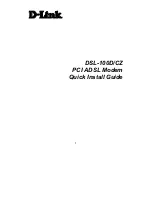
DMD2401 LB/ST L-Band Satellite Modem and ODU Driver
Operation
TM075 - Rev. 1.3
3-1
Section 3 – Operation
3.0 Theory of Operation
A digital terrestrial interface supplies the modulator with a data stream. The data stream is
synchronized if the incoming stream is framed. The data is scrambled, and FEC is added. The
data is then convolutionally encoded, punctured, then constellation mapped. The resulting I&Q
symbols are digitally filtered. The data is then converted into an analog waveform and is vector
modulated onto an RF Carrier produced from the Transmit IF Synthesizer Circuitry.
3.1 DMD2401 LB/ST Operation
A block diagram of the signal flow is shown in Figure 3-1 below. The modem is shown in a
typical application with customer data, Tx/Rx RF Equipment and an antenna.
Figure 3-1. Functional Block Diagram
3.2 Applications
Following are just a few representative forms of satellite communications links and networks in
which the DMD2401 LB/ST modem may be used.
3.2.1 SCPC Point-to-Point Links
The most straightforward application for a satellite modem is to serve as the Data
Communications Equipment (DCE) for a point-to-point data link. When used in this mode, two
modems located at two different sites are tuned to complementary transmit and receive
frequencies. Each direction of the communications link may have the same or entirely different
transmission parameters. In this application, it is typical that the link is established and
maintained on a continuous basis, although a special “on demand” case is described later.
















































